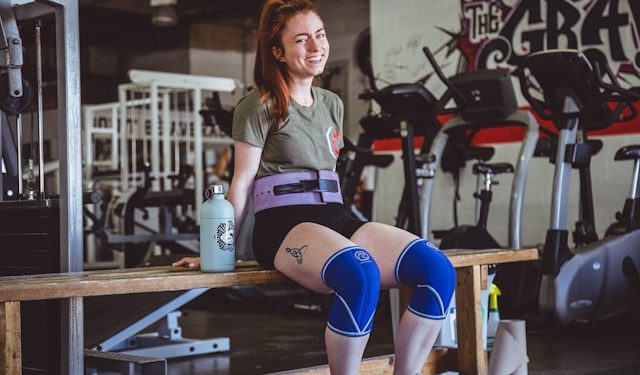On the earth of power coaching, instruments typically divide opinion. One piece of kit that sparks constant debate is the fitness center belt. Some lifters swear by them, fastening them cosy earlier than each set. Others consider over-reliance on exterior help can hamper true bodily growth. Understanding the position of those belts is crucial earlier than including one to your coaching routine.
What Fitness center Belts Really Do
At their core, gym belts function a stabilizing support. By rising intra-abdominal stress, they supply a firmer base for the backbone, which will help enhance efficiency and mitigate the danger of damage beneath maximal masses. For these pursuing private bests in squats, deadlifts, or overhead presses, this added help could make a considerable distinction. Nevertheless, they aren’t magical fixes. They don’t change robust belly muscle groups or right poor type. As an alternative, they’re a software for particular duties.
When To Attain For The Belt
Fitness center belts are most helpful throughout actions that load the backbone closely, particularly when lifting close to your most capability. Deep barbell squats and heavy deadlifts typically fall into this class. When making an attempt masses that method 85-90% of your one-rep max, utilizing a belt can present that further layer of safety and allow you to raise with higher confidence.
For these working inside low rep ranges with intense weights, a belt gives a useful safeguard. It reinforces the pure bracing mechanism of the core, notably when fatigue units in. Olympic lifters and powerlifters typically make the most of belts strategically of their coaching for exactly this motive.
Instances You Ought to Depart It In The Fitness center Bag
Belts aren’t supposed for each train or each lifter. For anybody targeted on constructing foundational core power, counting on a belt could be counterproductive. Workouts like goblet squats, lunges, kettlebell swings, or planks profit from permitting your core to interact freely with out further help.
Should you’re lifting average weights, typically lower than 70% of your one-rep max, there’s typically no want for a belt. Coaching belt-free in these ranges challenges your midsection to stabilize your physique naturally, selling extra balanced growth and long-term power good points.
The Significance Of Core Improvement With out Exterior Assist
Over-reliance on fitness center belts could result in a neglect of the muscle groups that stabilize your backbone and pelvis. Constructing power in your transverse abdominis, obliques, and multifidus ought to stay a precedence. These muscle groups work collectively to create stability, shield the backbone, and generate energy. Leaving the belt apart throughout warm-ups, accent lifts, and core workouts ensures these areas develop totally.
How To Use A Fitness center Belt Correctly
Should you determine to include a belt, utilizing it successfully issues. Place the belt round your midsection so it covers the world between your ribs and hips. It needs to be cosy however not so tight that you could’t draw a deep breath. The objective is to push your belly wall in opposition to the belt, rising stress by way of diaphragmatic respiration and bracing, not cinching it to the purpose of discomfort.
Widespread Errors To Keep away from
Sporting a belt for each set, even when lifting gentle weights, diminishes its supposed impact. It’s additionally a mistake to consider the belt as an alternative choice to correct approach. With out an understanding of right bracing mechanics, the belt turns into a crutch moderately than a efficiency enhancer.
Deciding If A Fitness center Belt Is Proper For You
Consider your training goals earlier than incorporating a belt into your routine. In case your focus is absolute power or powerlifting, the belt could also be an indispensable ally on your heaviest efforts. However, for those who’re working towards athletic efficiency, mobility, or purposeful health, growing uncooked core power typically takes priority.
Remaining Ideas
Fitness center belts are neither good nor unhealthy in themselves. Like several piece of kit, their worth relies on how and once they’re used. Strategy them with information, apply them with goal, they usually can help you in reaching your coaching milestones. However by no means allow them to turn into an alternative choice to robust, intentional motion.



![Dietitians’ guide to dining out during Lancaster City Restaurant Week [nutrition column] – LNP | LancasterOnline](https://cr3fit.com/wp-content/uploads/2025/03/J6_coFbogxhRI9iM864NL_liGXvsQp2AupsKei7z0cNNfDvGUmWUy20nuUhkREQyrpY4bEeIBucs0-w300-rw-75x75.webp)





 Arabic
Arabic Chinese (Simplified)
Chinese (Simplified) Dutch
Dutch English
English French
French German
German Italian
Italian Portuguese
Portuguese Russian
Russian Spanish
Spanish